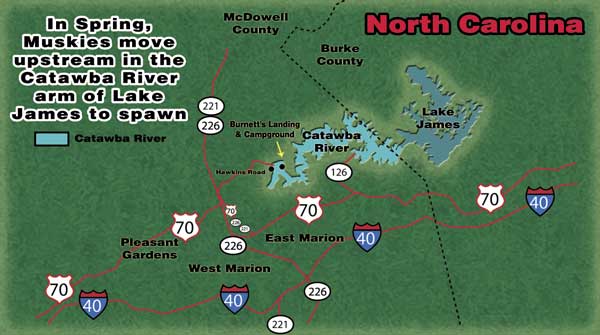
If anglers can find a place to launch a boat, Lake James provides N.C.’s top muskie action.
It was the perfect day for casting last March.
The sun was bright and there was no wind except a breeze generated by a fast boat moving at planing speed. The water surface was as smooth as glass and the depths below nearly as clear.
Jesse Buchanan had launched what most anglers would call a bass boat from a private landing after paying a small fee to an attendant. He maneuvered the boat while pointing out rocks and explaining shallow bars had to be crossed at high speed to keep the propeller and lower unit above them.
(Private and public launch ramps at Lake James were closed during January because of low water, but spring rains may raise the lake’s level. However, during January 2008, anglers launched johnboats and other small boats from the NCDOT right-of-way next to the Yancey Road Bridge at S.R.1501 across the Catawba River near Burnett’s Landing and Campground. From the junction of U.S. 70 and U.S.221/N.C. 226, travel 0.2 miles north on U.S. 70/U.S. 221/N.C. 226 then turn right at S.R. 1501. Travel approximately 2.8 miles, cross the bridge and launch from the right-of-way.)
As Buchanan’s boat slowed, the warming rays of the early morning sun vanished. A tall, sheer cliff cast a long shadow extending across the Catawba River arm of Lake James.
Buchanan readied his gear for a long day of fishing beneath the monolith. His rods he rigged were a bit longish for a typical largemouth or smallmouth bass angler who wanted to pummel the waters of Lake James with casts and retrieves.
Although Buchanan’s bait-casting reels would have seemed familiar to bass fishermen, they were spooled with superbraid line large enough to use on a boat-trailer winch.
Topping the size of the line and rods were massive lures he tied to the ends of the monofilament. These lures were large enough to be weighed in portions of pounds, not ounces, and connected to the lines with heavy steel leaders.
“It takes a big plug to interest a muskie, and you need a wire leader to keep him from cutting off the lure,“ Buchanan said. “I’ve caught 313 muskies and landed 595 in my boat. They call the muskie the fish of 10,000 casts. It takes a lot of casts just to raise one.“
Buchanan said catching a muskie is never guaranteed. Indeed, the opposite is true because two anglers fishing all day at Lake James may expect to raise one muskie every other day.
Moreover, raising a muskie doesn’t translate into landing one.
“In a muskie fisherman’s jargon, if you raise a fish, it means you actually got to see one looking at your lure,” he said. “If he hits and misses the lure, you ‘rolled’ him, and if he hooks up, you’ve ’struck’ or ‘hung’ him.”
Buchanan is one of the top professional muskellunge anglers in the country, fishing with a team during 25 tournaments each year in Wisconsin, New York, Pennsylvania, Ohio, Minnesota, Virginia, Tennessee and Kentucky. He makes a living by winning or placing in those tournaments and by guiding anglers who want to catch muskellunge, largemouth or smallmouth bass in the North Carolina mountains. He guides muskie anglers 115 days a year and bass fishermen 90 days annually. He also does a minimal amount of trout fishing because he prefers to catch big fish.
“On the professional muskie circuit, they call me the only redneck who can catch a muskie,” he said. “I don’t know if that’s a compliment or not, but I take it as one. It shows how very few southern fishermen are familiar with muskies. Most of the competitors come from the northern U.S. and Canada where the fish have a higher profile.
“I fish the Muskie, Inc., Professional Muskie Tournament Trail, Wisconsin Muskie Trail, Minnesota Muskie Tournament Trail and Ohio Muskie Tournament Trail.”
Like most muskie fishermen, Buchanan was introduced to the sport by accident. He raised a fish one day and became interested in catching it.
“I caught my first one June 8, 2000, in the Nolichucky River,” he said. “I caught him on a black-and-silver Mepps Muskie Killer with a bucktail. I had seen the fish three days before while I was bass fishing.
“I went back with one of my dad’s catfish rods and threw the lure in the same area and here he came. He was 40 inches long and weighed 22 pounds. After landing that fish, that’s all I wanted to do and I landed seven that year. My dad, Randy Buchanan, and my cousin, Burl Buchanan, always said I should go muskie fishing. They were right.”
Nevertheless, muskies are so hard to catch that Buchanan said his father had yet to catch one. He’s hooked more than two dozen while fishing with his son. But striking a muskie and landing one are two different propositions.
“I once hooked and lost 29 in a row then caught the next 15,” Buchanan said. “It plays with your mind when you continue losing them. But keep on trying and your luck will switch.”
Buchanan showed my wife, Carol, how to cast and work the lures. He rigged different types of lures on several rods. Each muskie lure looked like a bass lure on steroids.
The easiest to retrieve was a 4-ounce spinnerbait, which he tied on my wife’s line. It was black with four silver spinners.
Buchanan used a shallow-running twitchbait called a Crazy Crank. While casting the spinnerbait only required a steady retrieve, the twitchbait required a strong wrist to impart a ceaseless jerk-and-reel action.
“I’ve caught 57 muskies with this twitchbait,” he said. “I call it the ‘banana’ because it’s shaped like one and it’s yellow.”
Buchanan pointed out the tooth scars on his battle-worn banana lure. Then he stood on the bow with a landing net draped over the pedestal seat. He maneuvered the boat with a trolling motor along sunken rock ledges at the steep side of a channel with fallen trees at the shallow side.
Suddenly, Carol shrieked, ripping her spinnerbait from the water.
“A muskie darted within an inch of my lure then disappeared so fast it startled me,” she said.
“We’ve raised our one fish, now,” Buchanan said. “Let’s hope that’s not our only chance.”
Another hour of casting and Carol put down her rod for a break. Buchanan stood on the bow, twitching the yellow lure across the surface with a sideways action. He cast the banana near a logjam.
“He’s on,” Buchanan said with a shout.
Water erupted at the hook-set. The fish jumped as I tried to free the net, which tangled on the seat’s height-adjustment lever. The fish was hooked behind the dorsal fin, allowing it to pull powerfully with its head away from the boat.
Once freed, there was no way for the net to be slipped beneath the fish’s head because Buchanan couldn’t to work the fish to within 5 feet of the boat. The lure pulled free and swished back, just missing my ear.
“Sometimes they swipe and miss,” he said. “Set the hook at every bump or hesitation in the lure’s action you feel, and you might hook the fish anywhere.
“(A muskie’s) strike can be vicious or it can be subtle like that one was. It’s also important to fish every cast all the way to the boat. Every three or four casts lead the lure in a figure 8 three or four times before you pull it from the water. The fish may strike the lure when you only have 2 feet of line out.”
The frustrations continued, with Carol raising a couple more muskies and Buchanan missing hooksets of “rolled” fish.
He switched to a multi-colored Hellhound glide bait with a black background. The lure was retrieved in a walk-the-dog manner beneath the surface. During lunch beneath a highway bridge, Buchanan showed how he rigged for muskie fishing.
“I use an 8-foot St. Croix long-butt trigger rod with medium-heavy action,” he said. “It has a St. Croix Avid series AC 300 reel spooled with 80-pound Cortland Spectron line. I also use Cortland Toothy Critter tie-able steel leader material.”
He also offered more tips in the event the hot muskie action continued.
“If (a fish) rolls on the lure, keep doing a figure eight beside the boat until he hooks up,” he said. “If he doesn’t, keep casting back to that same spot because you know there’s a fish there. You try to catch that fish because it gives you higher odds than finding another fish. He might hit something different after he’s looked at one lure, so keep switching. If he jumps, he can toss the lure so keep his head down.”
We resumed fishing along a tree-lined bank. Dozens of casts later, a muskie torpedoed from beneath an overhanging branch to strike a spinnerbait on the end of my line. I saw the streaking fish stop suddenly and felt a tap but failed to set the hook. There was less than 4 feet of line off the rod tip, and Buchanan was in the path of the hook-set that should have been.
“I saw the fish spit the hook,” he said. “It always happens so fast. You should have brought the rod across your body and over your shoulder to set the hook like swinging a baseball bat in reverse. I call it the ‘South Alabama Hog Stroke.’ I’ve been knocked overboard by a rod before, but it’s more important to me to catch the fish.”
We experienced more raised, rolled and missed fish until the sun was beginning to set. Although we hadn’t landed a muskie, Buchanan was unwavering in his pursuit, easing the boat beside a fishing spot he recently discovered.
“There’s a pile of rocks fallen away from this cliff,” he said. “I can see it on my depth-finder between 15- to 25-feet down. Any deep structure like that will attract muskies.
“You can see some trees that have fallen into the water and the shade they make attracts the fish, too. The sun’s going down, and it’s bringing baitfish to the surface, so muskies should be coming up to feed on them.”
Buchanan made several casts where the baitfish flipped. Suddenly, his rod went over his shoulder and a water geyser splashed across the boat as a muskie leaped. The hook struck home and most of the battle took place within 20 feet of the boat.
Buchanan had the drag nearly locked down and the resulting fight was brutal but lasted only a few minutes. After four leaps and many circling runs, the net engulfed a 37-inch muskie, as Buchanan’s joyful hollering echoed between the cliffs.
While he was reviving the fish in his livewell before releasing it, Buchanan received a cell phone call from a prospective client. I picked up a rod rigged with a spinnerbait to make one last cast before the sun disappeared over the cliffs.
Water erupted as I set the hook at a savage strike, ripping the rod across my body as Buchanan had instructed. Buchanan inadvertently left the phone on when he dropped it to grab the net. The potential client booked several days’ fishing after he heard the reel drag screeching, and all the shouting and the splashing that resulted in a 40-inch muskie corralled in the landing net.
“It’s been an exceptional day,” Buchanan said. “We raised 11 fish, struck four and landed two. That’s 314 muskies for me and 597 for my boat.”
Jacob Rash, the N.C. Wildlife Resources Commission’s District 8 fisheries biologist, said the Lake James muskellunge introduction is a toothy subject because it was an accident.
“The original fish likely came from the Marion State Fish Hatchery upstream of the lake in the 1980s,” he said. “It’s a system we don’t stock, but the fish reproduce and maintain a significant population anglers enjoy.”
The WRC once stocked tiger muskies, a hybrid of northern pike, and muskellunge into the lake. But that practice was curtailed and tiger muskies no longer are present in Lake James. Some anglers were alarmed muskellunge would decimate gamefish, such as largemouth and smallmouth bass, but Rash said muskellunge primarily eat suckers.
“The muskellunge move into the Catawba River arm to spawn in spring,” Rash said. “We see them in our walleye gill-net sampling, and when we collect white bass and walleye for brood stock by electrofishing. The Catawba River arm has slightly more nutrients so it’s a different fishery from the Linville River arm, which has fewer nutrients. But muskies make it down to the main lake.
“If you’re confident in your gear and (fishing) technique and make lots of casts, you can catch them.”


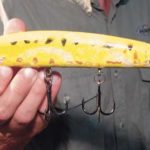
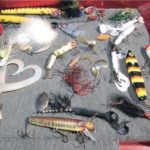
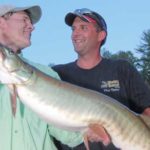
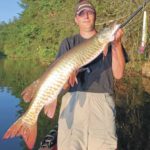
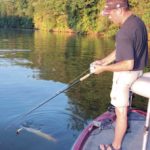
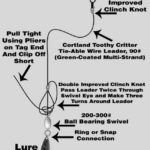
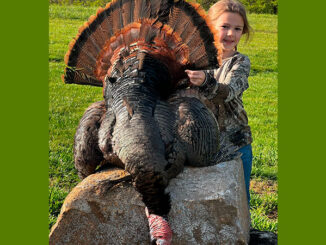
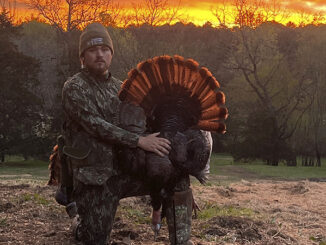


Be the first to comment